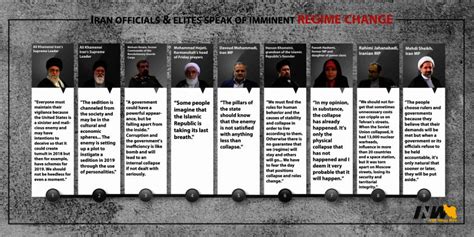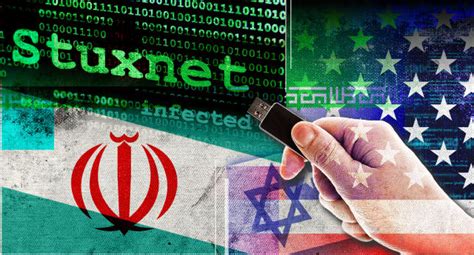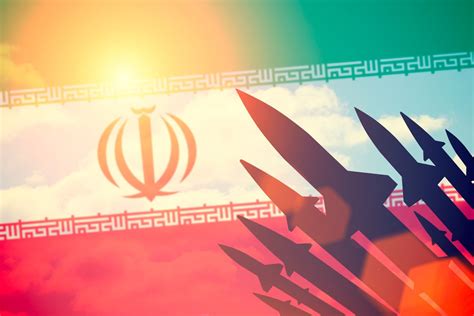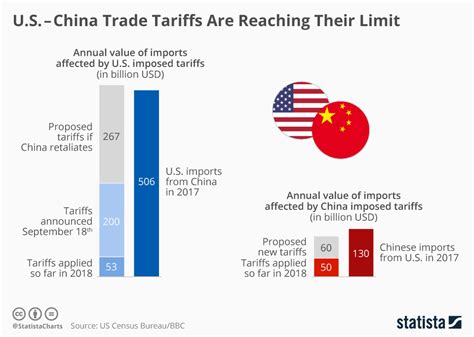
The possibility of the Iranian regime’s collapse is “very possible,” according to Behnam Ben Taleblu, a senior fellow at the Foundation for Defense of Democracies (FDD), citing internal pressures and a crisis of legitimacy as key factors.
Growing internal dissent, coupled with economic woes and a lack of public trust, are creating a perfect storm that could lead to the downfall of the Islamic Republic, according to Taleblu. He highlighted widespread protests, fueled by grievances over economic hardship, social restrictions, and political repression, as evidence of the regime’s eroding base of support. “There is a crisis of legitimacy in Iran that is brewing, that has been brewing for a while,” Taleblu stated in a recent interview, emphasizing the regime’s inability to address the population’s fundamental needs and aspirations.
The expert noted that the Iranian government is facing multiple challenges simultaneously. These include a stagnant economy crippled by sanctions, rampant corruption, and mismanagement, leading to widespread discontent. Moreover, the regime’s heavy-handed response to protests, characterized by violence and arbitrary arrests, has further alienated the population.
According to Taleblu, the regime’s legitimacy is not only being questioned internally but also externally. He noted that Iran’s foreign policy, marked by regional interventions and support for proxy groups, has isolated the country and strained its resources, diverting funds away from domestic needs. He argued that this aggressive foreign policy has further weakened the regime’s position, both at home and abroad.
Taleblu pointed to the increasing frequency and intensity of protests in Iran as a sign of the regime’s vulnerability. He noted that these protests are no longer limited to specific grievances but reflect a broader rejection of the entire political system. He emphasized that the regime’s inability to address these underlying issues could ultimately lead to its collapse. “The regime’s long-term viability is now in question,” he stated, adding that the current situation is “unsustainable.”
The potential collapse of the Iranian regime would have far-reaching consequences, both for the region and the world. It could lead to a period of instability and uncertainty, with potential implications for regional security, energy markets, and the global balance of power.
Internal Pressures and Crisis of Legitimacy
The crux of Taleblu’s argument rests on the assessment that the Iranian regime is grappling with a profound crisis of legitimacy. This crisis stems from a confluence of factors, including:
-
Economic Woes: Decades of economic mismanagement, coupled with international sanctions, have created a stagnant economy characterized by high unemployment, inflation, and widespread poverty. The Iranian rial has plummeted in value, eroding the purchasing power of ordinary citizens.
-
Social Restrictions: The regime’s strict social and cultural restrictions, particularly on women, have fueled widespread resentment, especially among the younger generation. The enforcement of these restrictions, often through heavy-handed tactics, has further alienated the population.
-
Political Repression: The regime’s suppression of dissent, including arbitrary arrests, torture, and executions, has created a climate of fear and stifled any meaningful political participation. The lack of political freedoms and the absence of accountability have further eroded the regime’s legitimacy.
-
Corruption: Rampant corruption within the government and the ruling elite has further undermined public trust and fueled resentment. Allegations of embezzlement and illicit enrichment have become commonplace, reinforcing the perception that the regime is more interested in self-preservation than in serving the people.
-
Demographic Shifts: Iran’s population is increasingly young and urban, with a growing number of educated citizens who are demanding greater freedoms and opportunities. The regime’s inability to meet these aspirations has created a growing disconnect between the rulers and the ruled.
Historical Context and Precedents
While the current situation in Iran is unique, it is important to consider the historical context and precedents for regime change in the country. The 1979 Islamic Revolution, which overthrew the Pahlavi dynasty, was itself a product of widespread discontent with the Shah’s authoritarian rule, economic inequality, and close ties to the West.
However, there are also important differences between the current situation and the period leading up to the 1979 revolution. The Islamic Republic has a more entrenched power structure, a more sophisticated security apparatus, and a greater willingness to use force to suppress dissent. Moreover, the Iranian opposition is more fragmented and lacks a clear leader or unifying ideology.
Despite these challenges, the Iranian regime is facing a level of internal pressure that it has not experienced since the early years of the revolution. The widespread protests, the economic crisis, and the erosion of public trust have created a volatile situation that could potentially lead to significant political change.
External Factors and Regional Implications
In addition to internal pressures, external factors are also playing a role in shaping the situation in Iran. The United States’ policy of “maximum pressure,” which includes economic sanctions and diplomatic isolation, has significantly weakened the Iranian economy and put pressure on the regime.
However, the impact of these sanctions is a subject of debate. Some argue that they have been effective in weakening the regime and forcing it to negotiate, while others argue that they have only hurt the Iranian people and strengthened the regime’s resolve.
Iran’s regional policies are also contributing to its internal problems. The regime’s support for proxy groups in countries like Syria, Lebanon, and Yemen has strained its resources and diverted funds away from domestic needs. Moreover, Iran’s aggressive foreign policy has alienated many of its neighbors and increased the risk of regional conflict.
The potential collapse of the Iranian regime would have far-reaching consequences for the region. It could lead to a power vacuum, with potential implications for the stability of neighboring countries, the fight against terrorism, and the future of the Israeli-Palestinian conflict.
Possible Scenarios and Outcomes
The future of Iran is uncertain, and there are several possible scenarios that could unfold. These include:
-
Regime Collapse: The regime could collapse due to internal pressures, external shocks, or a combination of both. This could lead to a period of instability and uncertainty, with potential implications for regional security and the global balance of power.
-
Gradual Reform: The regime could gradually implement reforms in response to public pressure. This could involve loosening social restrictions, improving economic conditions, and allowing for greater political participation.
-
Crackdown and Repression: The regime could intensify its crackdown on dissent and further tighten its grip on power. This could lead to increased violence and instability, but it could also allow the regime to maintain its control for the foreseeable future.
-
Military Intervention: While unlikely, military intervention by the United States or another country could lead to the overthrow of the regime. This would be a highly risky option, with potentially catastrophic consequences for the region.
The Role of the International Community
The international community has a role to play in shaping the future of Iran. Western countries can continue to pressure the regime through sanctions and diplomatic isolation, while also supporting the Iranian people’s aspirations for freedom and democracy.
However, it is important to avoid actions that could inadvertently strengthen the regime or destabilize the region. The international community should also be prepared to provide humanitarian assistance and support to Iran in the event of a collapse or major crisis.
Ultimately, the future of Iran will be determined by the Iranian people themselves. The international community can play a supporting role, but it cannot dictate the outcome. The Iranian people have a long history of resilience and resistance, and they will ultimately decide their own destiny.
The Economic Situation in Detail
Iran’s economy is struggling on multiple fronts, exacerbating the internal pressures on the regime. Here’s a detailed look at the key economic challenges:
-
Sanctions Impact: The most significant factor is the impact of international sanctions, particularly those imposed by the United States. These sanctions target Iran’s oil exports, banking sector, and access to international financial systems. Oil revenues, which historically constituted a substantial portion of Iran’s government income, have been significantly reduced. This has led to budget deficits, reduced government spending, and a decline in infrastructure projects.
-
Currency Devaluation: The Iranian Rial has experienced a steep decline in value against major currencies. This devaluation increases the cost of imports, fuels inflation, and erodes the purchasing power of ordinary Iranians. The weakening currency also makes it more difficult for Iranian businesses to compete in international markets.
-
Inflation: Inflation is a major concern, with official figures often understating the actual rise in prices. The cost of essential goods, such as food and medicine, has increased significantly, placing a heavy burden on low-income families. High inflation erodes savings and reduces living standards, contributing to widespread discontent.
-
Unemployment: Unemployment, particularly among young people, remains high. Lack of job opportunities fuels frustration and contributes to social unrest. Many educated Iranians are unable to find employment that matches their skills and aspirations, leading to a brain drain as skilled workers seek opportunities abroad.
-
Corruption and Mismanagement: Systemic corruption and economic mismanagement further compound the economic challenges. Corruption diverts resources away from productive investments and undermines public trust in the government. Inefficient management of state-owned enterprises also contributes to economic stagnation.
-
Lack of Foreign Investment: International sanctions and a perceived high-risk investment environment deter foreign investment. Foreign investment is crucial for modernizing Iran’s economy, developing its industries, and creating jobs. The lack of foreign capital further hinders economic growth.
-
COVID-19 Pandemic: The COVID-19 pandemic exacerbated Iran’s economic woes. The pandemic disrupted economic activity, reduced tourism, and strained the healthcare system. Lockdowns and social distancing measures further impacted businesses and employment.
Detailed Analysis of Social Unrest and Protests
Social unrest and protests have become a recurring feature of Iranian society, reflecting deep-seated grievances and a growing sense of dissatisfaction with the regime.
-
Economic Grievances: Many protests are triggered by economic grievances, such as rising prices, unemployment, and corruption. Demonstrators often express anger at the government’s failure to address their economic needs and improve living standards.
-
Political Repression: Protests also reflect broader discontent with political repression and the lack of freedoms. Demonstrators demand greater political participation, freedom of expression, and an end to arbitrary arrests and human rights abuses.
-
Social Restrictions: Strict social restrictions, particularly those imposed on women, are a major source of frustration. Protests against the mandatory hijab and other discriminatory practices have become increasingly common.
-
Government Response: The government’s response to protests is often heavy-handed, involving the use of force, mass arrests, and internet shutdowns. This response further fuels anger and resentment, leading to more protests.
-
Geographic Spread: Protests have spread to cities and towns across Iran, indicating widespread dissatisfaction. The protests are no longer confined to specific regions or social groups, but reflect broader discontent with the regime.
-
Demographic Participation: A significant proportion of protesters are young people, reflecting their frustration with the lack of opportunities and their desire for change. Women also play a prominent role in protests, challenging the regime’s restrictions on their rights and freedoms.
-
Lack of Leadership: While protests are widespread, they often lack a clear leadership structure or unifying ideology. This makes it difficult for the protest movement to coordinate its actions and articulate its demands.
Impact of Foreign Policy on Internal Stability
Iran’s foreign policy, characterized by its regional interventions and support for proxy groups, has significant implications for its internal stability.
-
Resource Diversion: Iran’s involvement in conflicts in Syria, Lebanon, Yemen, and Iraq diverts significant resources away from domestic needs. Funds that could be used for economic development, job creation, and social programs are instead spent on supporting proxy groups and military operations.
-
International Isolation: Iran’s foreign policy has led to international isolation and strained relations with many countries. This isolation makes it more difficult for Iran to attract foreign investment, access international markets, and participate in global forums.
-
Security Threats: Iran’s support for proxy groups and its involvement in regional conflicts increases the risk of security threats and retaliatory attacks. This requires the government to allocate more resources to defense and security, further straining the economy.
-
Public Discontent: Many Iranians question the government’s foreign policy priorities, arguing that the focus should be on addressing domestic problems rather than intervening in other countries. This discontent contributes to social unrest and undermines the regime’s legitimacy.
-
Sectarian Tensions: Iran’s foreign policy, which is often characterized by sectarian rhetoric and support for Shia groups, can exacerbate sectarian tensions within Iran. This can lead to social divisions and undermine national unity.
Comparison with Historical Precedents for Regime Change
Examining historical precedents for regime change can provide insights into the potential trajectories of the Iranian regime.
-
1979 Iranian Revolution: The 1979 Iranian Revolution serves as a crucial historical precedent. Factors contributing to the Shah’s downfall included authoritarian rule, economic inequality, corruption, Western influence, and suppression of dissent. Similar factors are present in Iran today, but the current regime has a more entrenched power structure and a more sophisticated security apparatus.
-
Arab Spring Uprisings: The Arab Spring uprisings offer another relevant comparison. These uprisings, which swept across the Middle East and North Africa, were fueled by similar grievances, including economic hardship, political repression, and corruption. However, the outcomes of these uprisings varied widely, ranging from regime change to civil war.
-
Collapse of the Soviet Union: The collapse of the Soviet Union provides a broader historical perspective on regime change. Factors contributing to the Soviet Union’s demise included economic stagnation, political repression, nationalist movements, and a loss of legitimacy. While the Iranian regime is different from the Soviet Union, some of these factors are also present in Iran.
-
Lessons Learned: These historical precedents highlight the importance of internal factors, such as economic conditions, political repression, and public discontent, in driving regime change. They also underscore the role of external factors, such as international pressure and regional dynamics. However, each case is unique, and the outcome depends on the specific circumstances and the choices made by key actors.
FAQ: The Potential Collapse of the Iranian Regime
1. How likely is the collapse of the Iranian regime, according to experts?
According to Behnam Ben Taleblu, a senior fellow at the Foundation for Defense of Democracies (FDD), the collapse of the Iranian regime is “very possible.” He cites growing internal dissent, economic woes, and a crisis of legitimacy as key factors contributing to this possibility.
2. What are the main internal pressures contributing to the potential collapse of the Iranian regime?
The main internal pressures include economic hardship (high unemployment, inflation, and poverty exacerbated by sanctions), social restrictions (particularly on women), political repression (arbitrary arrests, torture, and executions), rampant corruption, and demographic shifts (a young and urban population demanding greater freedoms).
3. What role do international sanctions play in the stability of the Iranian regime?
International sanctions, particularly those imposed by the United States, have significantly weakened the Iranian economy by targeting oil exports, the banking sector, and access to international financial systems. This has led to budget deficits, reduced government spending, and a decline in infrastructure projects, contributing to internal discontent.
4. How does Iran’s foreign policy affect its internal stability?
Iran’s foreign policy, characterized by regional interventions and support for proxy groups, diverts significant resources away from domestic needs. This strains the economy, leads to international isolation, increases the risk of security threats, and fuels public discontent among Iranians who believe the government should prioritize domestic issues.
5. What are some possible scenarios if the Iranian regime were to collapse?
Possible scenarios include a period of instability and uncertainty in the region, the emergence of new leadership or political structures, potential civil conflict, and significant implications for regional security, energy markets, and the global balance of power. The international community would likely need to respond with humanitarian assistance and diplomatic efforts to stabilize the situation.









